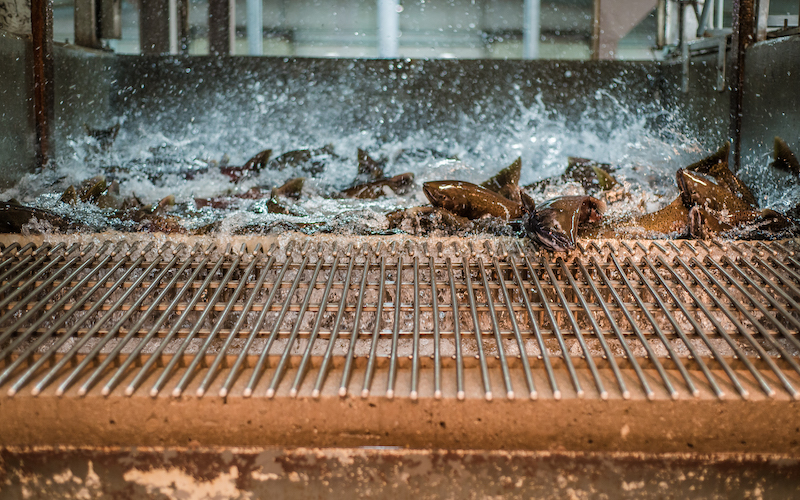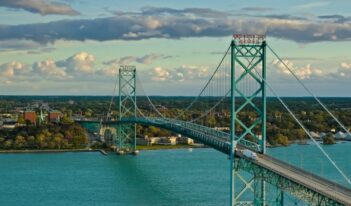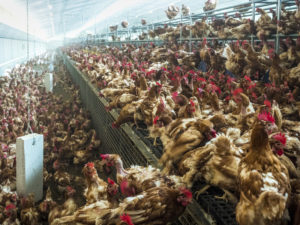
Scholars argue for reforms to Canada’s aquaculture regulatory system.
Industrial food production can have serious effects on the environment. Although the environmental impacts of farming and livestock receive the most public attention, two scholars urge improvements to the regulation of a lesser known mode of food production: fisheries.
In an article for the Ottawa Law Review, Angela Lee and Pierre Cloutier de Repentigny of the University of Ottawa Faculty of Law analyze the environmental consequences of the fishery industry in Canada and propose strategies for improving its regulation.
Lee and de Repentigny observe that large-scale aquaculture—the farming of aquatic plants and animals—has expanded in recent decades, to the point where it contributes almost half of the total global seafood supply. They assert, however, that Canadian fisheries regulation has focused only on short-term economic considerations at the expense of long-term environmental sustainability. Although the shift to aquaculture has lifted some of the burden on industrial agriculture, it has led “to replacing one set of problems with another,” they argue.
Lee and de Repentigny acknowledge that less reliance on agricultural food production has delivered some positive environmental effects. For example, the United Nations Food and Agriculture Organization notes that aquaculture has eased stress on wild fish populations that have suffered from overfishing. Indeed, the amount of fish caught through capture in open waters has remained stable since the mid-1980s, as all of the growth in fish production has come from aquaculture.
Aquaculture has become a major source of food worldwide, producing 170.9 million tons of seafood in 2016. The Canadian government estimated its aquaculture production that year to be worth over CA$1.3 billion. The industry continues to grow in tandem with the world population and demand for food.
But aquaculture’s effects have not all been positive, Lee and de Repentigny assert. Waste from aquaculture is dumped into coastal waters, where it has an adverse effect on many species. Antibiotics used in aquaculture can contaminate wild fish populations, and genetically modified aquaculture fish can escape from fish farms and cause havoc to wild ecosystems.
Canada requires a stronger regulatory system to deal with these issues, Lee and de Repentigny argue. They criticize the Aquaculture Activities Regulations—Canada’s main fisheries regulations—as insufficient and find the Canadian system as a whole to be “complex, fragmented, and deficient in many respects.”
The limited power of Fisheries and Oceans Canada (DFO)—the federal agency in Canada with jurisdiction over fisheries—contributes to the inadequacy of the system. Lee and de Repentigny characterize the DFO’s role as “limited mostly to reviewing the self-monitoring of the industry and intervening when a problem is reported.”
Even in this narrow role, the DFO could do better. Then-Commissioner of the Environment and Sustainable Development Julie Gelfand stated that the DFO insufficiently enforces current regulations. As a consequence, wild fish populations are suffering harm, undoing a major environmental benefit of fisheries. Furthermore, the DFO has not been validating information from industry self-reports. In response to Commissioner Gelfand’s report, the DFO has pledged to take a more consistent approach toward enforcement.
The current regulatory system is also struggling to deal with new advancements in the industry. Lee and de Repentigny focus on the case of the AquAdvantage salmon, a genetically modified fish capable of growing faster than ordinary salmon.
Genetically modified foods in Canada are subject to regulation from “a constellation of federal agencies, departments, acts, and policies,” Lee and de Repentigny say. The Canadian Food Inspection Agency, Health Canada, and Environment and Climate Change Canada (ECCC) all play roles in overseeing AquAdvantage salmon’s safety as a food and the potential environmental hazards it presents.
Lee and de Repentigny criticize the ECCC in particular for not taking a “more precautionary approach” in approving AquAdvantage salmon for industrial fisheries. Although AquaBounty, the creators of the fish, had originally planned to produce only eggs in Canada, ECCC permitted them to grow the fish there as well.
The Coalition for the Protection of Prince Edward Island Water, an environmental advocacy group, has opposed this development, reportedly describing the approval process as “woefully inadequate.” It labeled the situation as an example of “project splitting,” in which AquaBounty was able to get approval for producing eggs and then came back with the plan of growing the fish, “thereby avoiding an independent evaluation of a very different project.”
The Canadian Biotechnology Action Network, an environmental advocacy group, expressed serious concerns over the lack of transparency in the approval process and potential impacts of fish escaping. In addition, the fish do not require any special labelling, as Health Canada concluded that they are “as safe and nutritious” as Atlantic salmon.
Although the Canadian government has favored aquaculture as a more sustainable alternative to traditional agriculture, Lee and de Repentigny argue that current regulations “do not provide sufficient safeguards to create a sustainable framework for aquaculture.”
They argue instead that the Fisheries Act and the Canadian Environmental Protection Act, the two main laws governing aquaculture, should emphasize factors such as sustainability and conservation rather than focusing on “purely economic considerations.” In addition, the DFO should devote more resources to studying the environmental effects of aquaculture and provide more time for study and public comment when promulgating rules. With these considerations, it will be possible to establish a regulatory system that is sustainable and fair, Lee and de Repentigny conclude.



